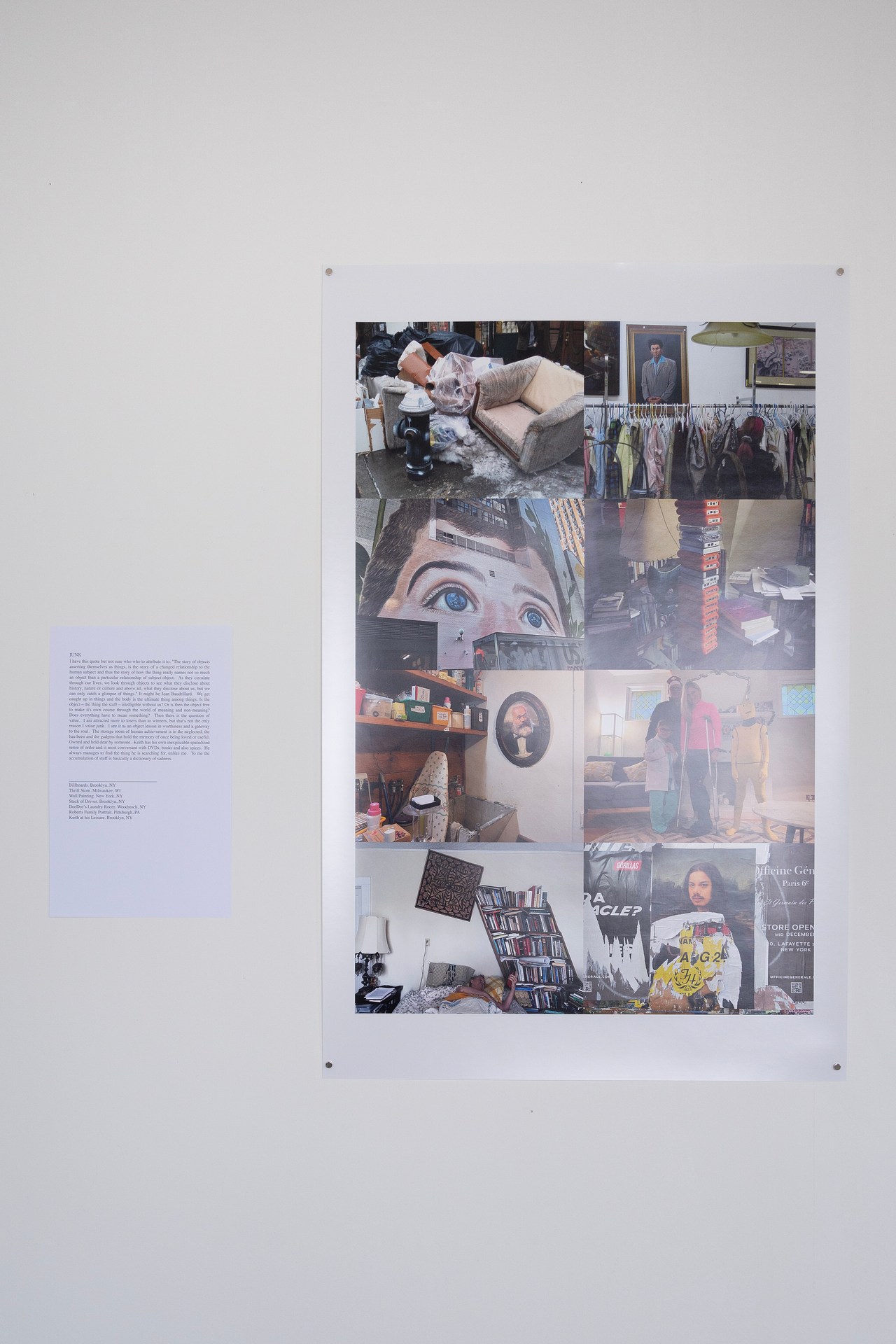La Masacre de El Aro (The Massacre of El Aro)
2017 - Drawing & Print (Drawing & Print)
Framed tryptich: 180.02 x 204.95 cm
Jorge Julián Aristizábal
La Masacre de el Aro (The Massacre of El Aro) by Jorge Julián Aristizábal refers to a massacre in Colombia which occurred on October 22, 1997 in the municipality of Ituango, Department of Antioquia. On this day, 15 individuals accused of being leftist supporters of FARC were massacred by paramilitary groups. Perpetrators also raped women, burned down 43 houses, stole cattle and forcibly displaced 900 people. The work belongs to a series in which the artist depicted some of the most infamous Colombian scandals of the last years in a colorful and scholarly style in a reference to wall newspapers habitually made by schoolchildren. For this series, the artist was inspired by a question from a young relative during a family dinner about the nature of the investigation known as Proceso 8000. Considering both the role of the artist as researcher and historian, and also subject witness, Aristizábal’s explicit intention in this body of work is to speak out against the way in which such events tend to be quickly forgotten. His work aspires to be an antidote to historical memory loss and a way to keep news stories from succumbing to the irrelevance of yesterday.
The work of Jorge Julia?n Aristiza?bal is difficult to classify due to its deliberate technical and stylistic diversity. The artist has affirmed that “he avoids cultivating a style or a definite form of expression at any cost,” since, for him, reproducing a style, whatever that might be, would mean cheating life itself, which is in constant change. Perhaps the only constant in his work is his insistence on drawing, which has had a dominant role in the Colombian art world of the past decade. Aristizábal is interested in creating images that awaken the language of the unconscious and that not only contain “ideas” but that can also challenge and dispute those very same ideas. His figurativism has instrumentally served to question the values of what he describes as a hypocritical society. Aristizábal’s work demonstrates the double standards that pervade contemporary Colombian society; from the prejudices towards “private” decisions on sexuality and religious filiation, to public concern over corruption and the political environment in which the artist exists.
Colors:
Related works sharing similar palette
» see more

© » HYPERALLERGIC
7 Art Shows to See in New York, February 2024 Skip to content A detail of Apollinaria Broche’s “I Close My Eyes Then I Drift Away” (2023) at Marianne Boesky Gallery (photo Hrag Vartanian/ Hyperallergic ) The short month of February still packs a lot of art in New York City, from a survey of the influential Godzilla Asian American Arts Network to Apollinaria Broche’s whimsical ceramics and Aki Sasamoto’s experimentations with snail shells and Magic Erasers in her solo show at the Queens Museum...

© » KADIST
Étienne Chambaud
2010In 2010, Kadist Art Foundation, David Roberts Foundation and Nomas Foundation successively presented an exhibition of the work of Etienne Chambaud in collaboration with Vincent Normand: The Siren’s Stage / Le Stade des Sirènes...
Related works found in the same semantic group
» see more

© » KADIST
Cildo Meireles
1975Meireles, whose work often involves sound, refers to Sal Sem Carne (Salt Without Meat) as a “sound sculpture.” The printed images and sounds recorded on this vinyl record and it’s lithographed sleeve describe the massacre of the Krahó people of Brazil...

© » KADIST
Emmanuel van der Auwera
2019Emmanuel van der Auwera visited Miami at the end of 2017 and was working on a project relating to school shootings...




